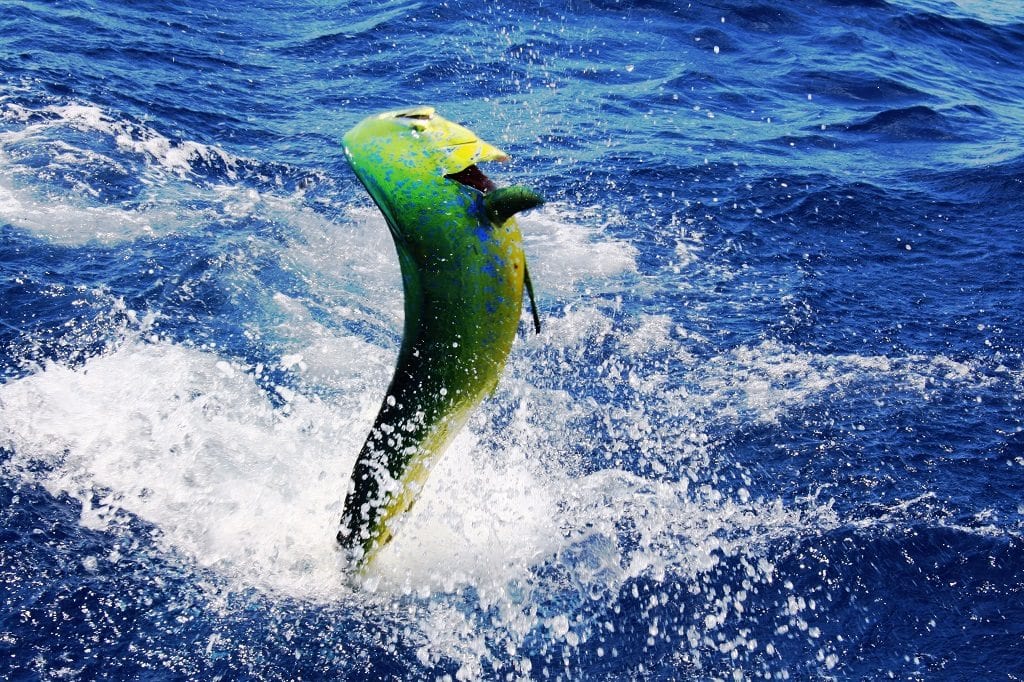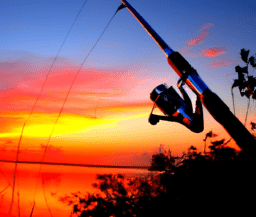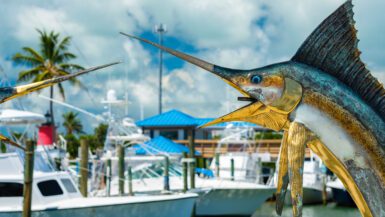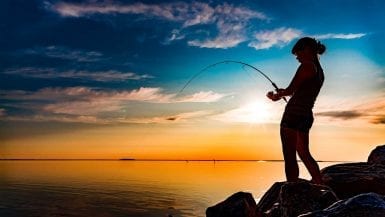The Florida coastline is a favorite fishing ground and nowhere is the action more exciting than when searching for the dolphin or Mahi Mahi during the fishing season. No other spot in the world beats Florida when it comes to the best dolphin fishing.
Rising with the sun and going to the shimmering waters of the bay, your eyes scanning the waves to see if you will be blessed with a view of a dolphin jumping as they pursue their food is what many dream about.
Landing splat in the middle of a school, the angler is kept busy fighting to land his fish. Also known as Dorado in Spanish, this fish type should not be confused with the bottlenose dolphin that is familiar to most people.
The experienced boat captain knows the telltale sign of the presence of these seaweed-loving fish. Frigate birds tend to circle above them. Dolphin fish also tend to swim with tuna. The two species make up the favorite foods of the Blue Marlin. When the captain maneuvers his boat into the school, the flash of neon blue, green, and yellow is an electrifying sight.
However, the action comes to the fore when the bait goes overboard, and the reels start singing. The dolphin fish will take live and dead bait or even artificial lures. However, they are strong fish with plenty of fight in them. The battle between man and fish truly comes to life off the shores of the sunshine state of Florida. Fishing for dolphin is not for the faint-hearted, but the rewards are worth your effort.
Dolphin fish feed on squid and flying fish and are known to hit speeds of 50 knots. They live for five years and grow quite fast. A major attraction for anglers is their pretty electric hues.
Dolphin fishing has another factor that intrigues anglers. The fish have peculiar habits that the angler can take advantage of. When a companion is hooked, the others will tend to group around their colleague rather than flee. This camaraderie saves anglers bait as the school will not leave colleagues. The anglers, knowing this, leave at least one hooked dolphin in the water rather than tossing it out.
The rest that surrounds it are then encouraged to take the bait tossed to them. Dolphin fish will accept all types of bait. They will go for casting bait such as bugs and flies. Cut bait is also taken, although the older and wiser fish seem to prefer live bait. Some captains will follow the schools hoping their anglers score on quantity through blind trolling. Others will opt to reel in a loner who will compensate lack of companions with his huge size.
Dolphin fish are identified easily by their color and shape. The male (bulls) have a blunt head that is more rounded in the females (cows). The young are known as “schoolies.” Dolphin fish schools tend to have members whose weight range is distinguished by their similarities. These range from a single pound to around 20.
Large fish, both cows, and bulls tend to be loners and could weigh around 50 pounds. In very rare cases, a lucky and determined angler will be gifted with the rare 80-pound monster. No photograph is as valued as that of your victory of catching such a monster. It is a real treasure to display even as you regale your friends and admirers with tales of your exploits amidst the dolphins.
The dolphins also score highly for food value, speed, and acrobatic prowess. This makes them top game fish. An angler will definitely gain status when their first dolphin lands on board successfully.
How do you know that your dolphin is hooked? Well, the fish will not take kindly to your success in getting the hook into him. He will show his anger by jumping out of the water and fighting you all the way. So, what better way to prove yourself than fighting and winning this battle. All in all, when it comes to dolphins, fishing in the state certainly takes the trophy.
So, get your gear, identify and hire a top captain and head into the waters of the sunshine state for the adventure of a lifetime. Don’t keep the dolphins waiting!





Leave a reply